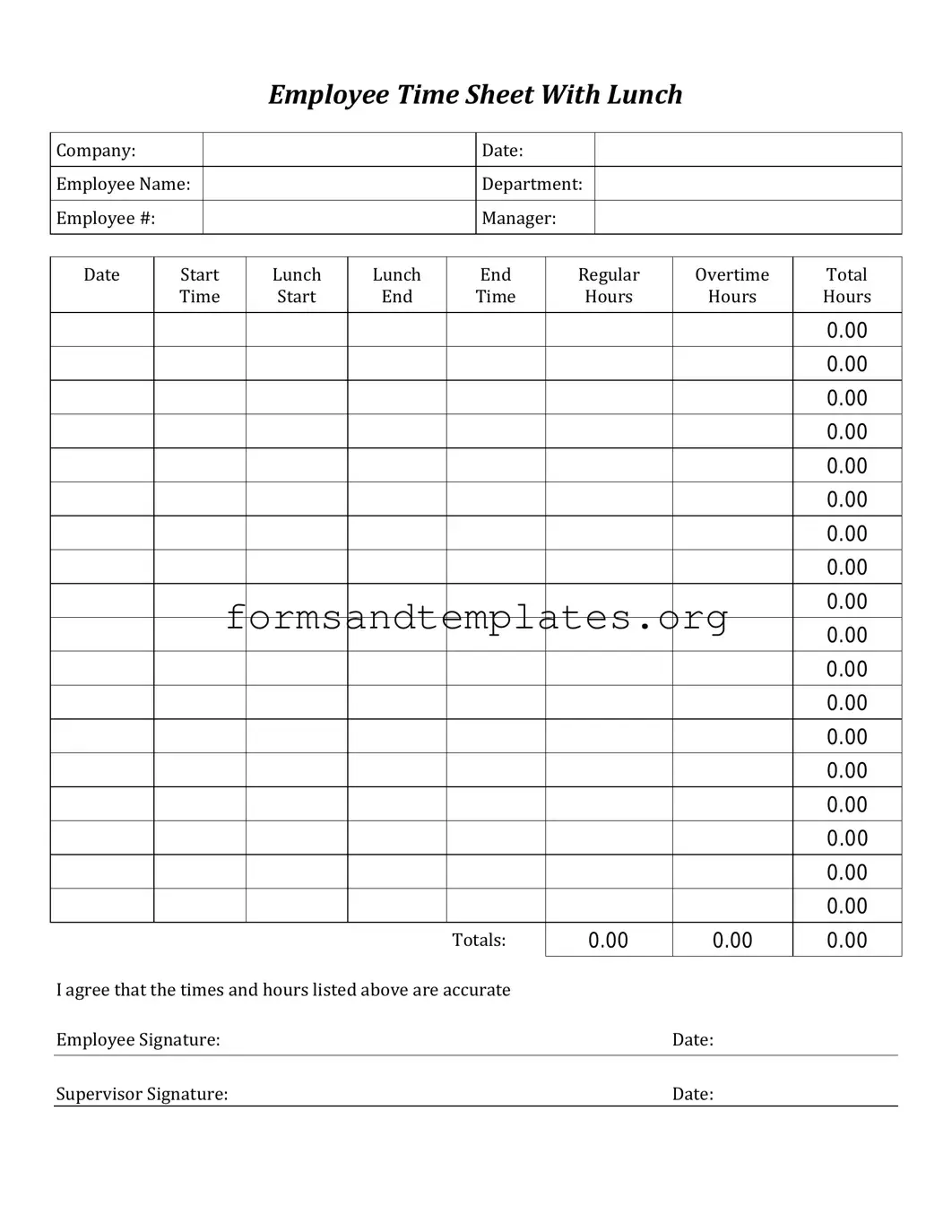A Time Card form is a document used by employees to record the hours they work during a specific pay period. It typically includes details such as the date, hours worked, and any breaks taken. This form helps employers track employee hours for payroll purposes.
All hourly employees are generally required to fill out a Time Card form. This includes full-time, part-time, and temporary workers. Salaried employees may not need to use this form unless specified by their employer.
To fill out a Time Card form, follow these steps:
-
Enter your name and employee ID at the top of the form.
-
Record the date for each workday.
-
Log the start and end times for each shift.
-
Note any breaks taken during your shifts.
-
Calculate the total hours worked for each day.
-
Sign and date the form at the bottom.
What should I do if I make a mistake on my Time Card?
If you make a mistake, cross out the incorrect entry and write the correct information next to it. Initial the change to indicate that it was made by you. If the error is significant, consider discussing it with your supervisor for guidance.
The due date for submitting a Time Card form varies by employer. Typically, it is due at the end of each pay period. Check with your supervisor or human resources department for specific deadlines.
What happens if I forget to submit my Time Card?
If you forget to submit your Time Card, it may delay your paycheck. It’s important to notify your supervisor as soon as possible. They may allow you to submit a late form, but policies vary by company.
Can I submit my Time Card electronically?
Many employers now allow electronic submissions of Time Card forms. Check with your HR department to see if this option is available. If so, follow their guidelines for electronic submission.
What if I worked overtime?
If you worked overtime, make sure to clearly indicate the extra hours on your Time Card. Most employers have specific policies regarding overtime pay, so it's essential to follow those guidelines. Keep records of your hours to ensure accurate payment.
While the format may vary by employer, most Time Card forms include sections for employee information, dates, hours worked, and total hours. Ensure that you use the form provided by your employer to meet their requirements.
If you have questions about your Time Card, reach out to your supervisor or the human resources department. They can provide clarification on policies, submission processes, and any other related inquiries.

